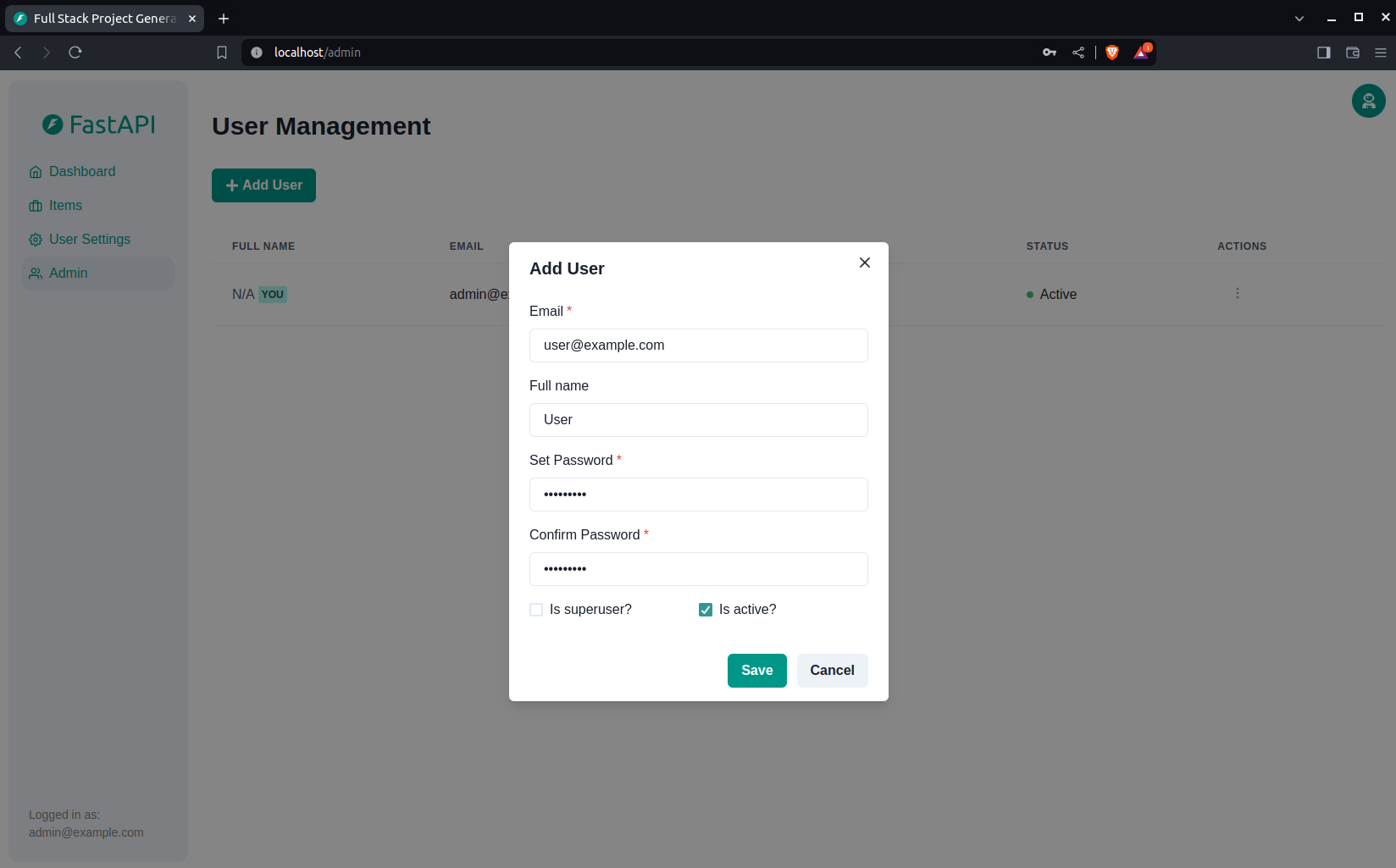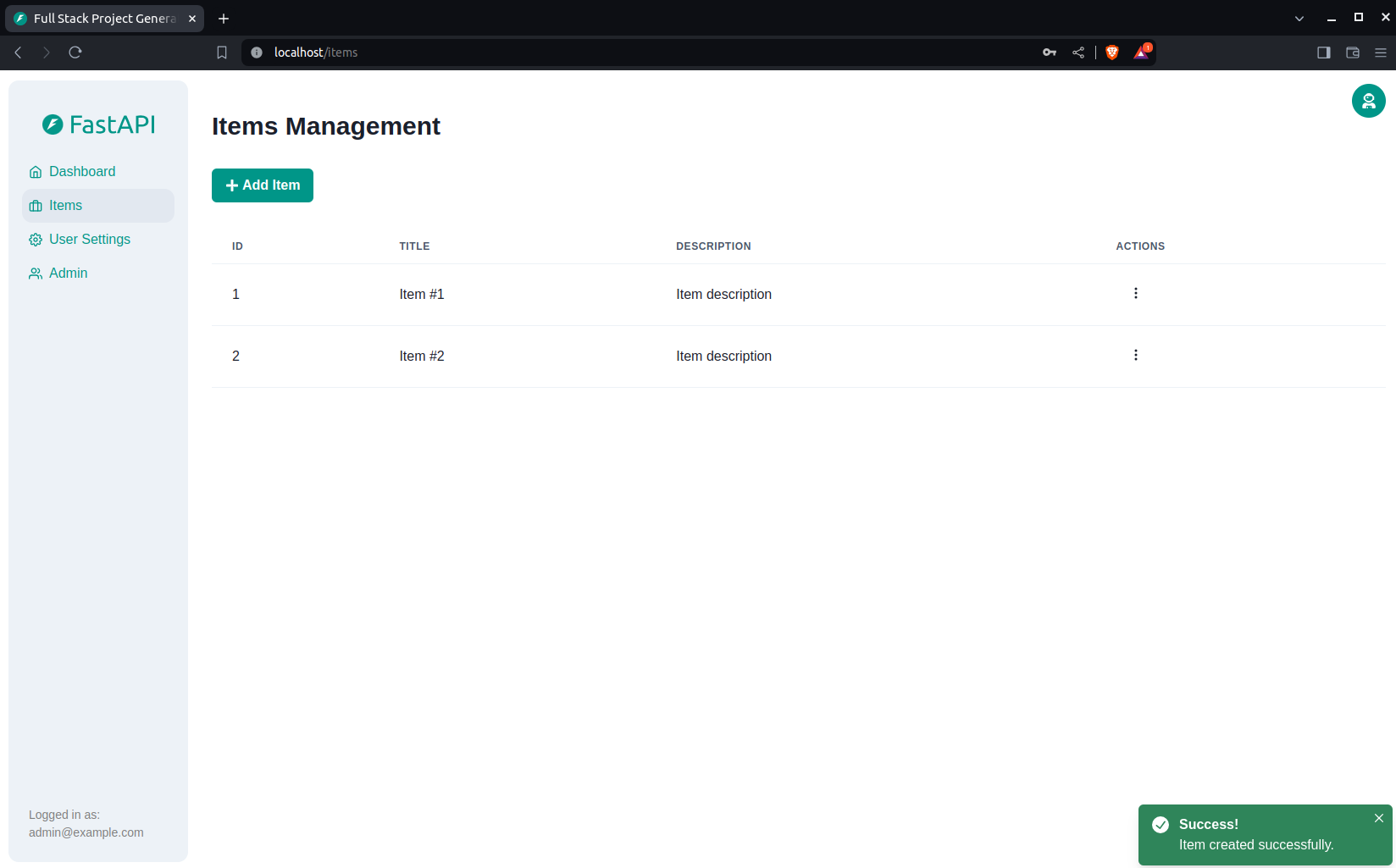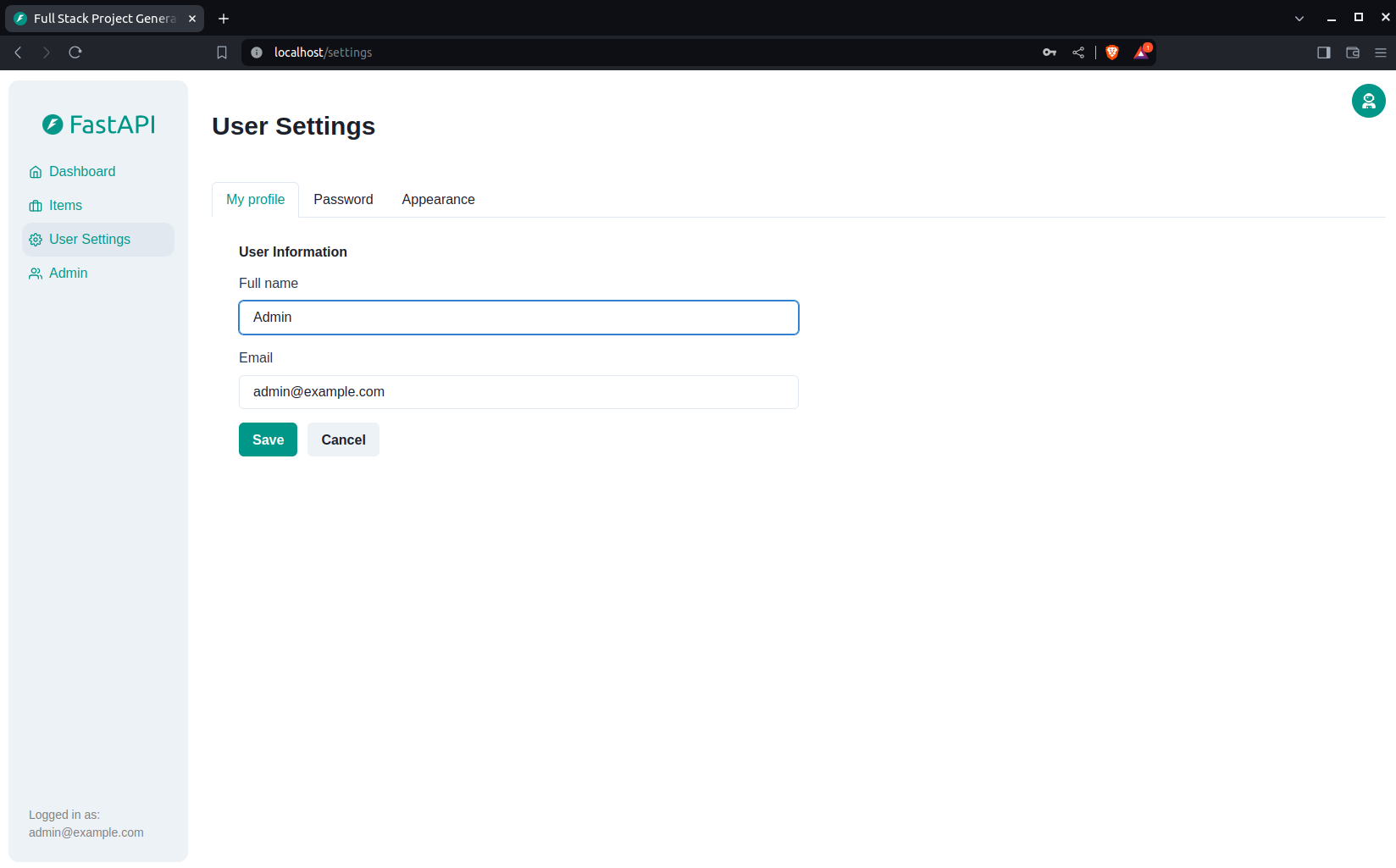This project is currently being restructured, don't use it right now, hold for a bit.
In the next couple of weeks it will be ready. 😎 🚀
Some of the future new features and changes:
- Upgrade to the latest FastAPI.
- Migration from SQLAlchemy to SQLModel.
- Upgrade to Pydantic v2.
- Refactor and simplification of most of the code, a lot of the complexity won't be necessary anymore.
- Automatic TypeScript frontend client generated from the FastAPI API (OpenAPI).
- Migrate from Vue.js 2 to React with hooks and TypeScript.
- Make the project work as is, allowing to clone and use (not requiring to generate a project with Cookiecutter or Copier)
- Migrate from Cookiecutter to Copier
- Move from Docker Swarm Model to Docker Compose for a simple deployment.
- GitHub Actions for CI.
- ⚡ FastAPI for the Python backend API.
- 🧰 SQLModel for the Python SQL database interactions (ORM).
- 🔍 Pydantic, used by FastAPI, for the data validation and settings management.
- 💾 PostgreSQL as the SQL database.
- 🚀 React for the frontend.
- 💃 Using TypeScript, hooks, Vite, and other parts of a modern frontend stack.
- 🎨 Chakra UI for the frontend components.
- 🤖 An automatically generated frontend client.
- 🐋 Docker Compose for development and production.
- 🔒 Secure password hashing by default.
- 🔑 JWT token authentication.
- 📫 Email based password recovery.
- ✅ Tests with Pytest.
- 📞 Traefik as a reverse proxy / load balancer.
- 🚢 Deployment instructions using Docker Compose, including how to set up a frontend Traefik proxy to handle automatic HTTPS certificates.
- 🏭 CI (continuous integration) and CD (continuous deployment) based on GitHub Actions.
You can just fork or clone this repository and use it as is.
✨ It just works. ✨
You can then update configs in the .env files to customize your configurations.
Make sure you at least change the value for SECRET_KEY in the main .env file before deploying to production.
You will be asked to provide passwords and secret keys for several components.
They have a default value of changethis. You can also update them later in the .env files after generating the project.
You could generate those secrets with:
python -c "import secrets; print(secrets.token_urlsafe(32))"Copy the contents and use that as password / secret key. And run that again to generate another secure key.
This project template also supports generating a new project using Copier.
It will copy all the files, ask you configuration questions, and update the .env files with your answers.
You can install Copier with:
pip install copierOr better, if you have pipx, you can run it with:
pipx install copierNote: If you have pipx, installing copier is optional, you could run it directly.
Decide a name for your new project's directory, you will use it below. For example, my-awesome-project.
Go to the directory that will be the parent of your project, and run the command with your project's name:
copier copy https://github.com/tiangolo/full-stack-fastapi-postgresql my-awesome-project --trustIf you have pipx and you didn't install copier, you can run it directly:
pipx run copier copy https://github.com/tiangolo/full-stack-fastapi-postgresql my-awesome-project --trustNote the --trust option is necessary to be able to execute a post-creation script that updates your .env files.
Copier will ask you for some data, you might want to have at hand before generating the project.
But don't worry, you can just update any of that in the .env files afterwards.
The input variables, with their default values (some auto generated) are:
domain: (default:"localhost") Which domain name to use for the project, by default, localhost, but you should change it later (in .env).project_name: (default:"FastAPI Project") The name of the project, shown to API users (in .env).stack_name: (default:"fastapi-project") The name of the stack used for Docker Compose labels (no spaces) (in .env).secret_key: (default:"changethis") The secret key for the project, used for security, stored in .env, you can generate one with the method above.first_superuser: (default:"admin@example.com") The email of the first superuser (in .env).first_superuser_password: (default:"changethis") The password of the first superuser (in .env).smtp_host: (default: "") The SMTP server host to send emails, you can set it later in .env.smtp_user: (default: "") The SMTP server user to send emails, you can set it later in .env.smtp_password: (default: "") The SMTP server password to send emails, you can set it later in .env.emails_from_email: (default:"info@example.com") The email account to send emails from, you can set it later in .env.postgres_password: (default:"changethis") The password for the PostgreSQL database, stored in .env, you can generate one with the method above.pgadmin_default_user: (default:"admin") The default user for pgAdmin, you can set it later in .env.pgadmin_default_password: (default:"changethis") The default user password for pgAdmin, stored in .env.sentry_dsn: (default: "") The DSN for Sentry, if you are using it, you can set it later in .env.
Check the file release-notes.md.
The FastAPI Project Template is licensed under the terms of the MIT license.
The documentation below is for your own project, not the Project Template. 👇
See more instructions specific to backend development in backend/README.md.
See more instructions specific to frontend development in frontend/README.md.
See more instructions specific to deployment in deployment.md.
See general development instructions in development.md.
This includes using Docker Compose, custom local domains, .env configurations, etc.





